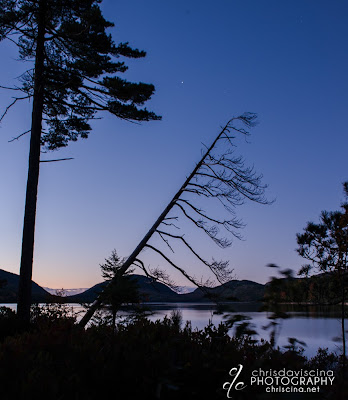Acadia Revisited - Lessons That Bear Repeating
"Do not say 'this is how the landscape looks', but
rather 'this is how I represent and interpret the landscape I encounter.'"
One of the best experiences in my life was going on a five day landscape workshop in Acadia National Park with photographer, Robert Rodriguez, Jr. I recently got to re-live that experience as I prepared a talk/slideshow to present to Austin Photographic Society.
THE PLACE:
Acadia is located on
Mount Desert Island, and with 108 square miles, it is the largest island off
the coast of Maine. In 1901, George B. Dorr, worked tirelessly to preserve the land for perpetual
use of the public. In 1919, President Woodrow
Wilson signed an act establishing it Lafayette National Park, the
first national park east of the Mississippi.
John D. Rockefeller Jr. endowed the park with 11,000 acres and in 1929, the park was named
Acadia. Acadia's landscape
features the elements that have made Maine's coastline world famous, including
rocky shores, secluded coves, roaring surf and tree-topped peaks. It encompasses
several different parks within the park, including Otter Cliffs, Sandy Beach,
Jordan Pond, Eagle Lake, Bass Harbor Lighthouse, Cadillac Mountain and Bernard
Harbor.
WHAT I LEARNED:
• What does not add, detracts – less is more!
• USE YOUR HISTOGRAM! Expose
to the right and ensure that the brightest part of the image is either nearly or very slightly touching the right shoulder of the histogram. Don't clip the darkest colors or the lightest colors.
to the right and ensure that the brightest part of the image is either nearly or very slightly touching the right shoulder of the histogram. Don't clip the darkest colors or the lightest colors.
• Look at the scene and try to determine how you would
caption an image. What’s the story? What’s the subject?
• Light is the key ingredient to a good image.
You can have an amazing subject but without good light
and good composition it just doesn’t work.
Pay attention to the direction of light, the temperature
of light, the quality of light:
Airlight occurs pre-sunrise and
post-sunset, and produces soft shadows, reflection off sky;
Backlight – offers a strong
emotional appeal;
Sidelighting – strong
reds in the foreground that pull you in
and allow the light to accentuate the landscape.
• Create as much depth and dimension as possible.
I went to a talk at Austin PPA last week and many of these same rules were repeated. I guess we all need to hear them again and again because they are simply the rules of making a good landscape image.
Happy shooting, friends!
Happy shooting, friends!










Comments
Post a Comment